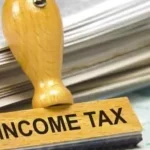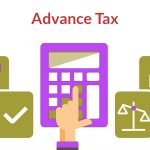In India, citizens pay a part of their earned amount to the Government of India in form of Income Tax. However, these taxes are levied on income basis along with different tax slabs. Under Section 10 of the Income Tax Act, salaried employees can enjoy certain tax benefits to reduce tax burdens.
What is Section 10 of Income Tax Act?
Section 10 of the Income Tax refers to the income or allowances that do not form a part of main income of the individual. Under Section 10 of the Income Tax, total income is mainly calculated while analysing the total amount of tax liability of a salaried professionals.
Exemptions under Section 10 of Income Tax Act
Government of India offers various exemptions under Section 10 of the Income Tax Act. Given below is the table consisting subsections under the tax laws-
| Section and Subsections | Forms of Tax Exemption |
| Section 10 (1) | Earnings through agricultural means in India |
| Section 10 (2) | Income or any amount achieved through a coparcener from a HUF (Hindu undivided family), which includes the family income |
| Section 10 (2A) | Income received from the profit of being a partner to a company |
| Section 10 (4) (i) and (ii) | Any interest amount paid to a non-resident of India in person or transferred through a bank account |
| Section 10 (4B) | Any interest amount paid to a non-resident of India but an Indian by origin |
| Section 10 (5) | Any concession is given on travel to an Indian employee |
| Section 10 (6) | Any income of a non-Indian citizen made or received in India |
| Section 10 (6A), (6B), (6BB), (6C) | Government tax levied on the earnings of a foreign company |
| Section 10 (7) | Allowances that government employees receive while being stationed abroad |
| Section 10 (8) | Income earned under Cooperative Technical Assistance Program by foreign employees working in India |
| Section 10 (8A) and (8B) | Earnings of a consultant, or the consultant’s staff |
| Section 10 (9) | Income of the family members of foreign employees under Cooperative Technical Assistance Program |
| Section 10 (10) | Any death-cum-retirement gratuity received under the revised Pension Rules of the Central Government |
| Section 10 (10A) and (10AA) | Any commuted amount earned during retirement and the amount made via encashment of leaves during retirement |
| Section 10 (10B) | Compensation that workers get for relocation in job |
| Section 10 (10BB) and (10BC) | Any remittance obtained according to the Bhopal Gas Leak Disaster Act 1985 or in the event of any disaster |
| Section 10 (10CC) and (10D) | Any amount received through taxation, perquisites and life insurance policy |
| Section 10 (11), (12) and (13) | Any amount received through Statutory Provident Fund, an authorised or recognised Fund or via a Superannuation Fund |
| Section 10 (14) | Allowance utilised for meeting business expenses |
Eligibility to Claim Deduction under Section 10 of the Income Tax Act
Generally, individuals below the age of 60 are eligible to avail a tax exemption limit of ₹2.50 lakhs. While, senior citizens can avail an exemption limit up to ₹3 lakhs.
Documents Required to Claim Deductions Under Section 10 of the Income Tax Act
In case an individual is eligible for income tax exemption, it is important to know the documents that re required to claim deductions under section 10 of the Income Tax Act. Below given are the lists of documents required for the same-
- Permanent Account Number
- Aadhaar Card
- Bank Statement/Passbook
- Income Tax Login Credentials
Section 10 of the Income Tax Act- FAQs
Yes. Pre-requisites are free under Income Tax on the employee part only if the employer has paid taxes for the same.
From Section 10(1) to Section 10(13) of the Income Tax Act offers complete exemption on allowances.
Yes. The entire helper allowance is tax-free only if this allowance is received from the employer.
No. House Rent Allowance (HRA) is not fully taxable under Section 10 of the Income Tax Act. The prime reason of such exemption is because Section 10 (13A) of the Income Tax Act exempts part of the HRA.
Individuals can claim ret allowance, allowance for children education, travel allowance, gratuity and so on under the Section 10 of the Income Tax Act.




